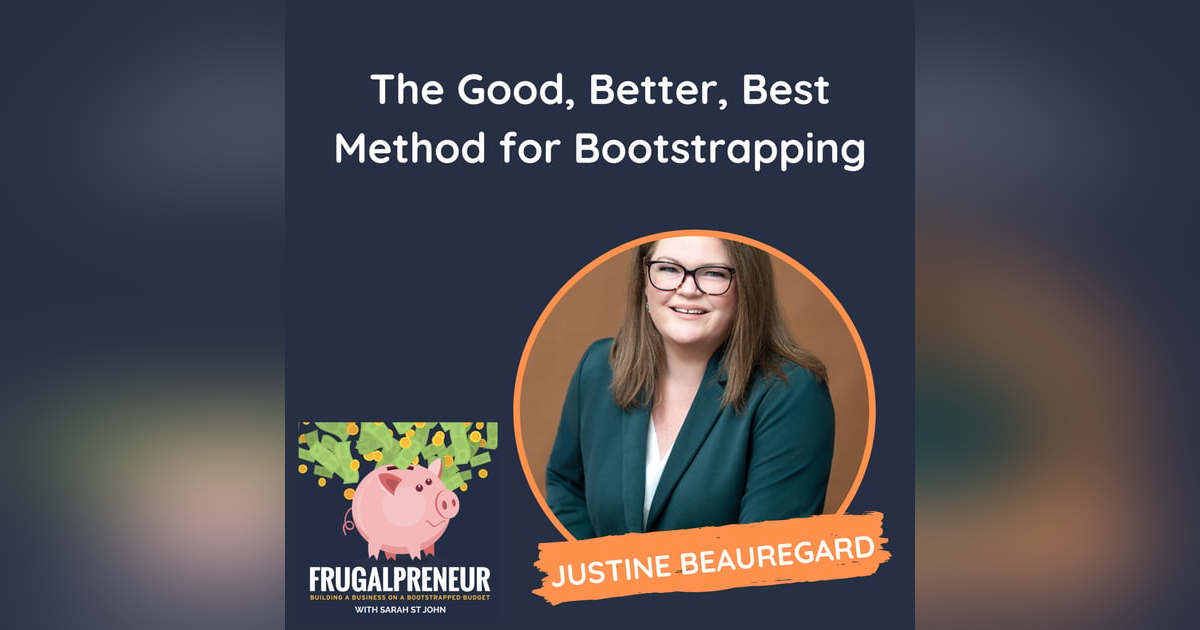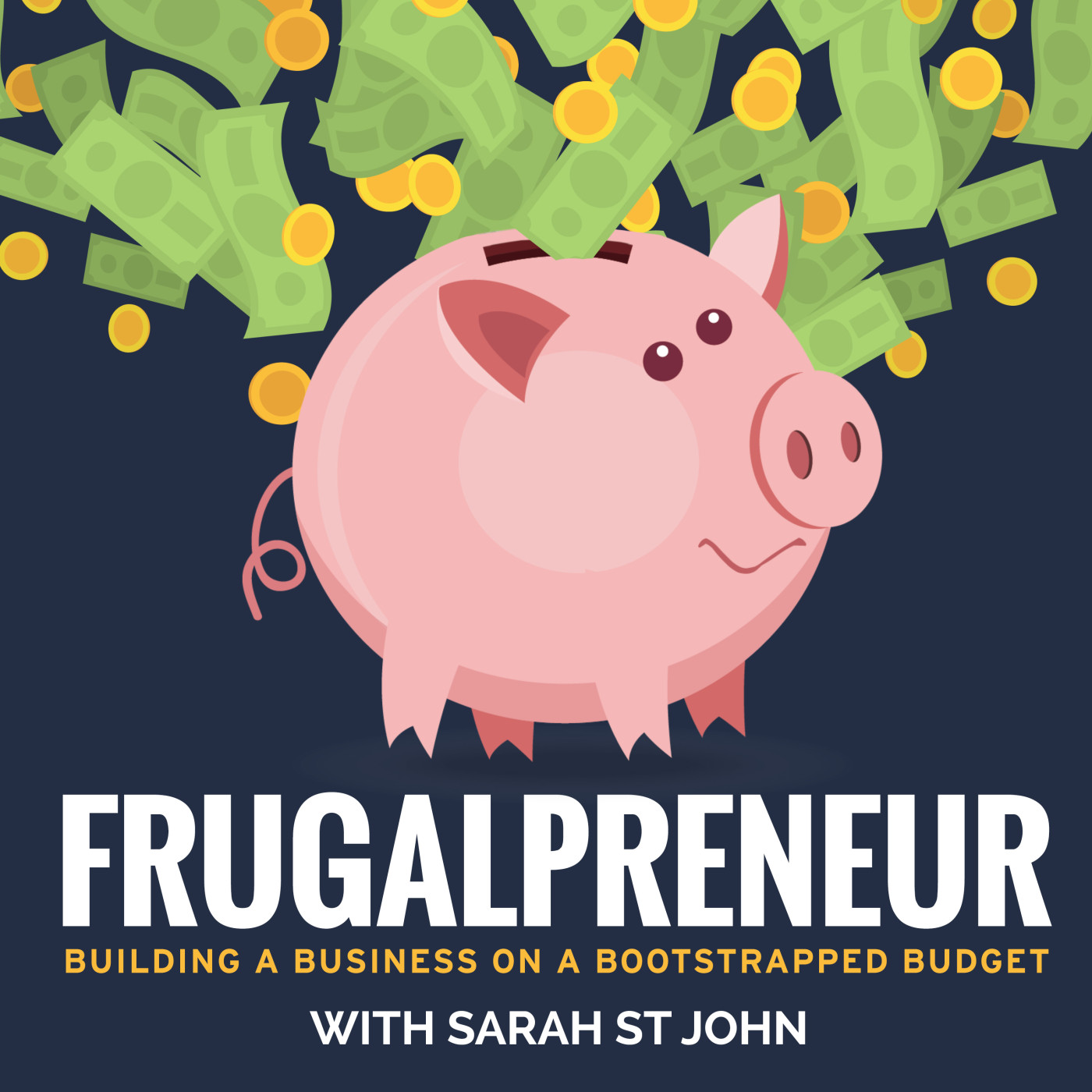The Good, Better, Best Method for Bootstrapping (with Justine Beauregard)

In an enlightening discussion, the podcast delves into the journey of a seasoned entrepreneur (Justine Beauregard) who has navigated the intricate landscape of bootstrapping a business. Her narrative is steeped in personal anecdotes, tracing her aspirations back to childhood influences, particularly the entrepreneurial spirit demonstrated by her grandmother. This early exposure ignited a passion for business that persisted through various creative ventures during her youth. After a substantial period spent in corporate environments, she made the pivotal decision to launch her consulting agency, doing so with a mere $919, an embodiment of her commitment to frugality and resourcefulness.
Throughout the dialogue, Justine shares her experiences, marked by both notable successes and significant failures. Her initial forays into the business realm were characterized by a robust profit margin, owing to the nature of her service-based offerings. However, she candidly addresses the challenges of bootstrapping, particularly her struggles with technology and the temptation to overextend herself in an attempt to save costs. This led to a series of frustrating setbacks that highlighted the necessity of understanding one’s operational needs and the value of investing in appropriate tools and solutions. Her reflections serve as a cautionary tale, underscoring the importance of strategic decision-making in the entrepreneurial journey.
As the episode progresses, listeners are treated to a wealth of practical advice derived from her experiences. She introduces the 'good, better, best' framework, which serves as a strategic tool for evaluating choices and optimizing resources. This approach empowers entrepreneurs to start with feasible options, gradually refining their processes as they gain clarity about their objectives. Additionally, she stresses the importance of making timely decisions to facilitate progress and avoid the pitfalls of analysis paralysis. By synthesizing her journey into actionable insights, the entrepreneur equips aspiring business owners with the knowledge necessary to navigate their own bootstrap ventures with confidence and acumen.
Takeaways:
- Bootstrapping a business requires careful evaluation of available resources and options.
- The balance between spending time and money is crucial for effective business management.
- Understanding the scope of your objectives can significantly enhance your decision-making process.
- Creating a 'good, better, best' framework is beneficial for optimizing business solutions.
- It is essential to make quick decisions to facilitate iteration and improvement.
- Utilizing tools like AI can expedite the process of establishing a functional tech stack.
Resources:
00:00 - Untitled
00:44 - Untitled
00:49 - Introduction to Showcase Episodes
02:12 - Starting My Entrepreneurial Journey
04:00 - Bootstrapping Business Insights
06:36 - Effective Decision-Making in Bootstrapping
08:31 - Empowered Decision Making for Business Owners
Welcome to the Frugalpreneur podcast. I am your host, Sarah St. John.This episode is what I refer to as a showcase episode where I feature a bootstrapped entrepreneur and they briefly share their tips, tricks, tactics, techniques and tools that help them bootstrap their business and the successes and failures along the way.My hope is that each of these showcase episodes will provide at least one valuable takeaway that you can implement with right away in your own bootstrap business journey. Now onto the episode.
Justin BeauregardI've wanted to be an entrepreneur my whole life. So when I was growing up, I watched my mom's mom, my maternal grandmother, run multiple businesses, real estate ventures, raise five children.I always had this dream that I would follow in her footsteps.And after many years of different business ideas, from selling friendship bracelets to to homemade bags and jewelry and running puppet shows in my backyard for $5 a ticket, I got a little bit jaded and I went into the corporate world for almost a decade.I tried working for publishing companies, I tried working for startups, I tried working for software companies, I tried working for educational nonprofits. I really dipped my toe into a bunch of different things and I kept coming back to this idea of running my own business. So.So about 10 years ago I launched my first consulting agency and I never looked back.Even though my business has been through many iterations over the years, it has always come back to me doing what I love and serving the people that I am excited to help and support in the ways that I feel they deserve to be supported and that I am excited to deliver the services I provide as a sales coach and strategist. I have been bootstrapping my business since the beginning. I actually started my business with $919.I know that because I went back and calculated how much money I spent on software and my laptop and Internet and all of the things that I needed to get started, which was super low overhead. But ultimately I have been a DIYer since the very start of my business, looking for ways to save money to cut corners.And sometimes that meant spending more time than money on things and having it take me a lot longer to figure things out, piecing together different pieces of software to make it work at a lower price point to now, recognizing that sometimes bootstrapping my business means that I need to spend a little bit on software and automation so that I'm not spending hours and hours and hours of my time on certain things. So it's been an interesting road to figure out what is the most effective use of the resources that I have available to me.And again, sometimes that's money and sometimes that's time and sometimes that's my level of effort.But ultimately it's always been about finding the right solution solutions to get where I want to go as quickly as possible with the least amount of stress, energy and effort. I have had so many successes and even more failures when it comes to bootstrapping my business.When I first started, I really felt successful because I was able to have a really high profit margin from the start of my business because I have a services business, so I didn't have to have physical inventory or employees to make it work. All I needed to do was show up with my skillset and deliver at a price point that I felt comfortable.But my biggest failure in strapping my business has always come down to a lack of understanding and what I actually needed to be successful and working problems for longer than I needed to.When I first invested in membership platform software, I got into that thinking, I'm going to save so much money and I'm going to piece together these seven pieces of software and build everything myself.And it took me hours and hours and hours of time and stress and it never looked good and it never really worked and it was always clunky and there were so many customer service issues and I had like 70% turnover in my membership because of all these tech glitches. And ultimately all I needed to do was spend $100 more a month and everything was done for me and beautiful and set up.So I think what I would say to somebody who's looking to bootstrap in their business is, is really evaluate your options, do some free trials, understand what you're looking at, talk to people who've done it before and really understand the full scope of what you're looking at.Because you can end up saving a lot of time and money and stress in the long run by understanding what your objectives are and the quickest best ways to get to them. And now with AI tools like ChatGPT, you can even build an entire tech stack in about five minutes. That works beautifully.One of my best tips for bootstrapping my business was creating a good, better best for the bootstrapping. So I would start off with the good. How can I accomplish this?Maybe it takes a little bit more effort, maybe it's a little more clunky, maybe it's not exactly what I want it to look like, but it gets the job done better is it looks better, it works better, it flows better, and everything comes a little bit closer to my ultimate vision for that outcome.And then the best is it's the least amount of effort, it's the least amount of time, it's the most efficient, it's the best experience, and sometimes it's also the cheapest or the most affordable.And so really looking at the full scope of what I'm trying to achieve and then coming up with different scenarios and figuring out how to make it work based on what I have access to right now has been really helpful. One of my favorite tips for bootstrapping any business is to understand that less is best.And a lot of the time, you can get to the same outcome many different ways.And so you need to just ask yourself how you want it to look, and what you want it to feel like and what you want it to be, and what you want your level of effort and your budget to look like for that scenario to really work. And so as you evaluate your options, it's not so simple as A plus B equals C.Sometimes you have to sit down and weigh, how much better is this solution for this amount more money, or how much less time is it going to take me if I integrate this one piece into the process or not?And so really sitting down and getting clear on what you want that process to be and look like is going to help you make decisions so much more effectively.And the second part of this is to make quick decisions, because mulling over your options for weeks on end is something that's really easy to fall into the trap of doing. But ultimately, the quicker you can decide, the quicker you can iterate and optimize and really find the solutions that work for you.So find the way that you want to move forward, no matter what it is, and figure out a way to make it work.Try to stick to the least amount of things involved so that the least amount of things will break, and then continue to just test and try different things to get to the solution that is ultimately the best for you. For now, instead of thinking, what does it have to be in the long run, you can just operate from the place of what does it need to be to work today?And what's going to feel really good to me as a business owner right now, in this moment, with what I have access to and what I know, and that's going to help you make such more empowered decisions.
Sarah St JohnI hope you enjoyed that episode and were able to take away a valuable nugget of information that you can implement right away in your own business. If you feel your story would be valuable for the listeners of this show, please visit Frugal Show Guest.








